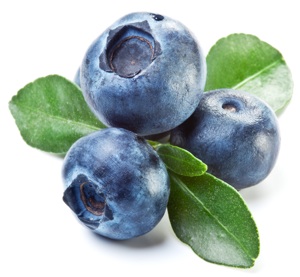US (OR): Blueberry growers could team with wild bees
 An agricultural study is underway to see if creating more foraging habitat for bumblebees will increase the pollination and yield of blueberries bushes, which mostly depend on bees to turn their blossoms into berries.
An agricultural study is underway to see if creating more foraging habitat for bumblebees will increase the pollination and yield of blueberries bushes, which mostly depend on bees to turn their blossoms into berries.
Oregon State University researchers will determine if bordering fields with vegetation that blooms from early spring to late fall will attract bumblebees and other native bees searching for pollen for food. The scientists hope that while the bees are at work, they’ll pollinate the nearby blueberry flowers, which only blossom for a short time in the spring.
“It’s very important to give native pollinators a reason to hang around blueberries,” said Sujaya Rao, an OSU entomologist working on the project. “Just one fruit crop with three or four weeks of bloom is not enough to sustain a bumblebee colony. If more native pollinators, like bumblebees, can be attracted, the pocketbooks of blueberry growers would benefit.”
Rao is seeking blueberry growers who are willing to participate in the study. She’ll ask them to plant native or exotic flora that is attractive to bees, such as rosemary, germander, California lilac, sage and red clover. The plants would serve as food – not housing – for the bees, which live in holes in trees or in abandoned rodent borrows in the ground.
Researchers will then estimate the numbers of native bees in fields with and without the hedgerows and they’ll measure the blueberry yield.
Funded by the U.S. Department of Agriculture, the research is part of a five-year project led by Michigan State University addressing challenges faced by specialty crop industries, including vegetable, berry, fruit tree, and nut growers across the country.
Because bees are essential to the pollination of blueberries, Oregon growers typically place rented honeybee hives near their fields, but that can cost more than $100 per acre. And honeybees have their limitations as pollinators of blueberries. Unlike bumblebees, they can’t “buzz pollinate,” which occurs when the bees’ vibration releases pollen from deep inside the anthers of certain flowers. Blueberry bushes produce larger, more plentiful fruit when buzz-pollinated.
Also, unlike bumblebees, honeybees aren’t active in cold, wet weather, which is abundant in the spring.
Blueberries were Oregon’s 19th most important agricultural commodity in 2011 in terms of gross sales, according to a report by the OSU Extension Service. Farmers sold $74 million of the fruit, up from $57 million in 2010, the report said. Growers harvested more than 60 million pounds on 8,137 acres in 2011.
In 2012, Oregon became the only U.S. state allowed to export blueberries to South Korea. The South Asian country imported nearly 500,000 pounds from Oregon in the first year, according to the Oregon Department of Agriculture.
Source: stpns.net






